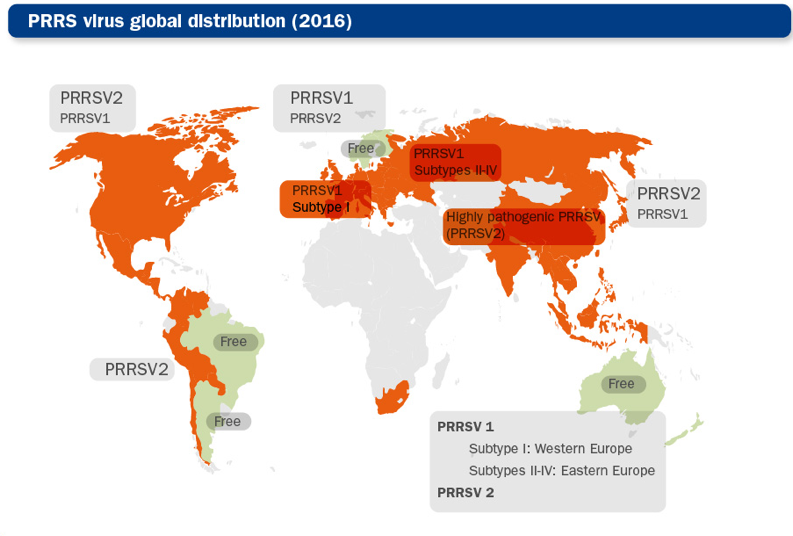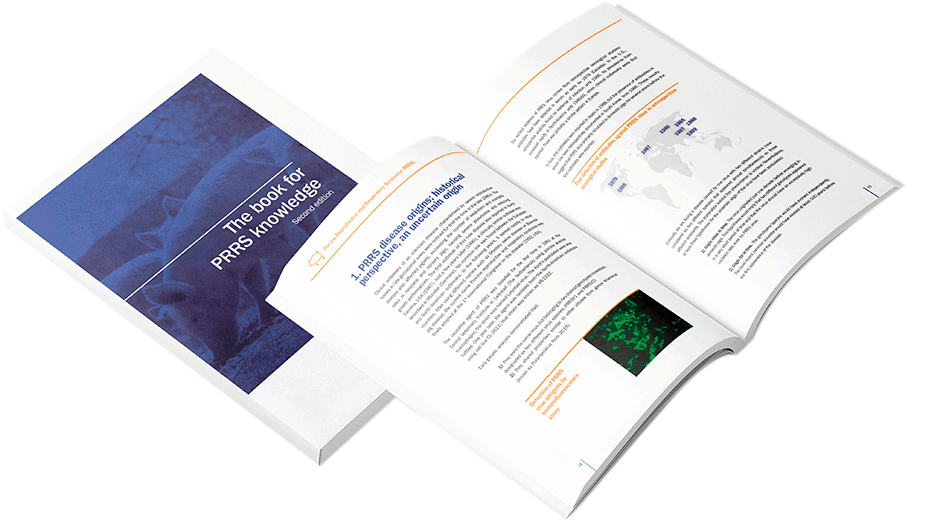There are many HP-PRRSV cases in China and Southeast Asia. And there are highly pathogenic Lena strain outbreaks in eastern Europe. Why are these highly pathogenic PRRS outbreaks localized in some countries? Is there any possibility of these highly pathogenic PRRSV strains occurring in Korea? Can we not detect them in lab tests for some reason?
Highly pathogenic PRRS (Porcine Reproductive and Respiratory Syndrome) is characterized by unusual, very high morbidity in affected pigs compared to the traditionally known PRRS.
A part from severe febrile reaction, a variety of gross lesions and clinical signs were reported from HP PRRS cases, but there is no single definitive clinical sign(s) and/or gross lesion(s) that are suggested as a conclusive diagnostic measure for HP PRRS.
Sudden onset of very high mortality in suckling piglets (up to 100%), nursery pigs (up to 70%), finishers (up to 20%), and breeding sows (up to 10%) was an indicator for the HP PRRS in the Chinese pig herd in late 2000s and even higher mortality in the early 2010s.
Because of this unique sudden occurrence of high mortality cases without involvement of any other pathogens, it is not easy for farmers and pig health related personnel to miss this disease once it occurs in their pig herds. Therefore, based on my understanding and information collected from the field for decades, as of 2020 there has been no HP PRRS case detected in the Korean pig herd.
HP PRRS virus (HP PRRSV) showed some genetic variations in NSP2 and in structural proteins of ORF 2-5 which is one of the characteristics of the HP PRRSV isolates from affected farms in China and elsewhere.
Viruses analyzed over the years from the field cases of PRRSV in Korean pigs showed variety in the mutations in these regions of the genes without clinical signs of HP PRRSV. In addition, the mutations of the viruses were not identical to those of the previously reported HP PRRSV viruses in China and other parts of the world.
Since HP PRRS could be diagnosed by a combination of both typical clinical manifestation (very high mortality) and genetic characteristics of the virus, there has been no such case reported in Korea. Based on the collected data, no Highly pathogenic PRRS has been observed nor diagnosed by very important clinical means in Korean pig herds yet.
This may simply reflect the fact that there is no HP PRRS circulating or it is possible that relatively widely used PRRSV vaccines for long periods of time may possibly affect the clinical onset of HP PRRS in the Korean pig herd. Continued monitoring of the PRRSV in pig herds will provide more reliable data in the future.
If you want to know more about highly pathogenic PRRS strains and its geographical distribution read out chapters and publications: “Virulent strains” and “Geographical distribution”
You can ask your own question! Visit Pig333.com and submit your question to the experts.

University of Konkuk, South Korea





